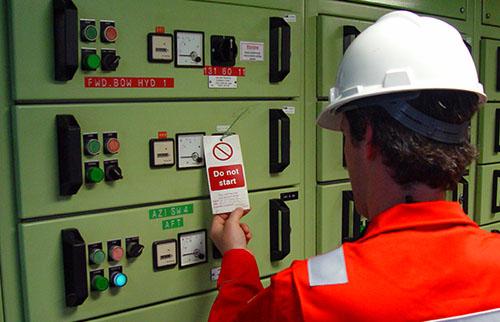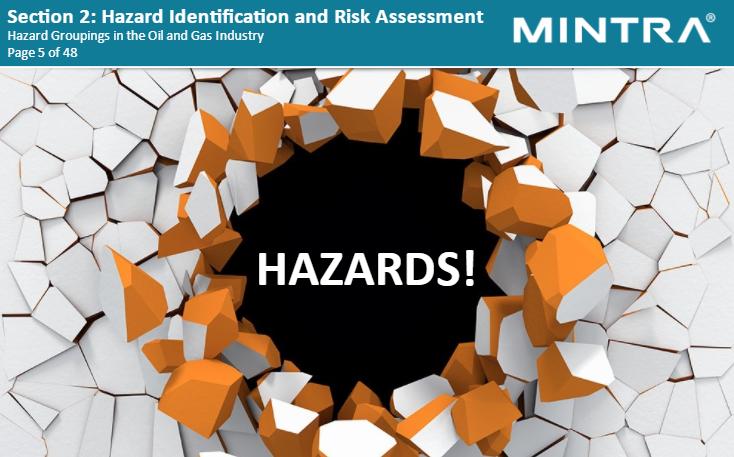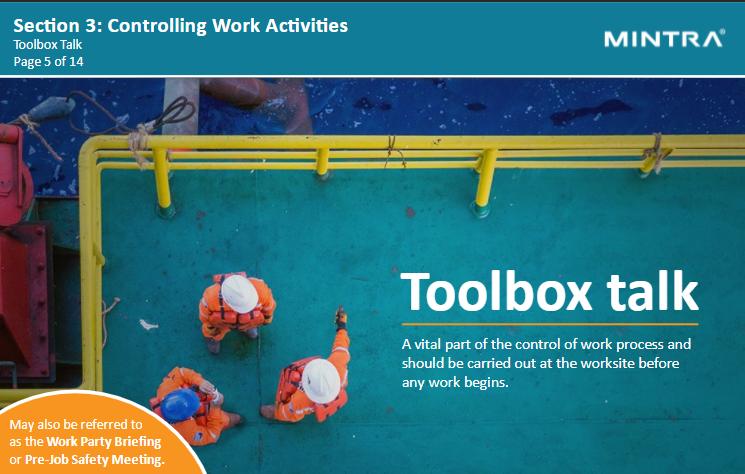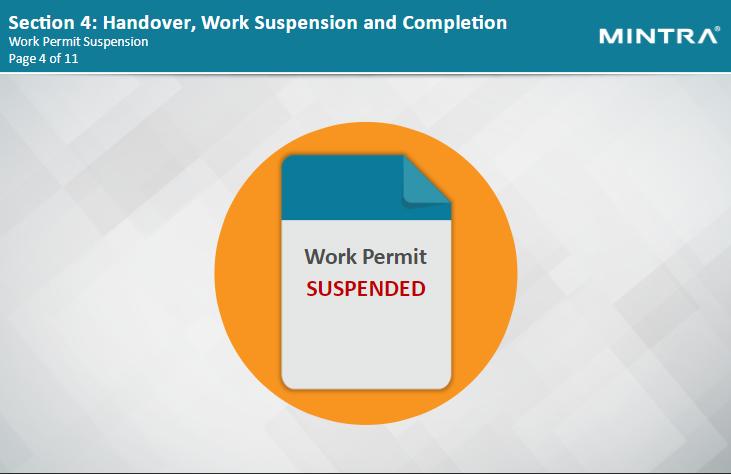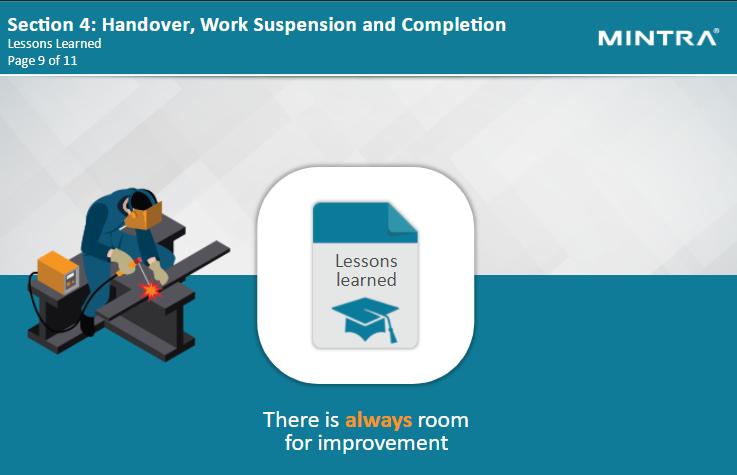
OPITO accredited
Buy and assign to
multiple learners
Instant access
via email link
Instant certificate
via email
Further Information - Control of Work: Performing Authorities Training - OPITO approved
Description
This OPITO-approved course can be completed online with identity verification.
Before you can access the course, you will be asked to complete an identity verification check followed by an OPITO registration form. The course cannot be accessed until both steps are completed.
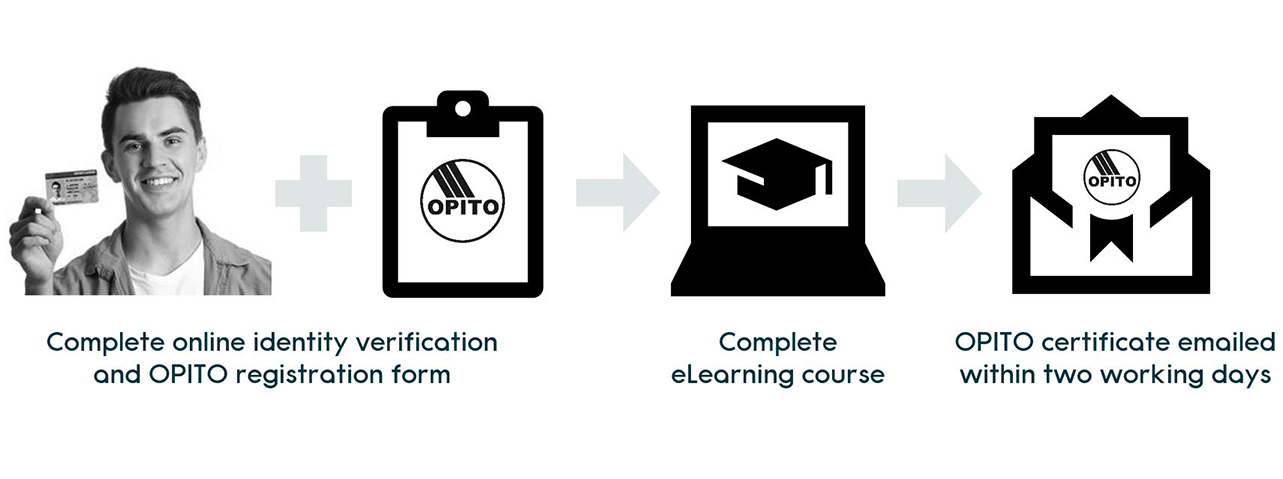
For the identity verification check, you will need a picture ID, such as a passport or driving license, and a smartphone.
On completion of the course, you will automatically receive a Mintra certificate and this will then be replaced with the OPITO - approved certificate usually within two business days.
Who is this course for?
This Control of Work: Performing Authorities Training - OPITO approved course is aimed at personnel with responsibility for the Control of Work at a worksite(s).
Is previous experience required?
You do not need prior knowledge or experience to complete this course. It is assumed that you are competent in your designated role.
How will the course benefit me?
This course will provide you with an understanding of the skills required to safely carry out the role of a Performing Authority.
How will the course benefit my company?
This course aims to ensure that all members of the global Oil and Gas workforce have a consistent and common understanding of, and approach to, Control of Work.
What standards or regulations are referenced in the course?
• The Health and Safety at Work Act
• The Management of Health and Safety at Work Regulations
• The Offshore Installations and Pipeline Works (Management and Administration) Regulations
• The Control of Substances Hazardous to Health Regulations (COSHH)
• HSG 250 and 253
• Electricity at Work Regulations
• Provision and Use of Work Equipment Regulations (PUWER)
• Lifting Operations and Lifting Equipment Regulations (LOLER)
• Manual Handling Operations Regulations
• Personal Protective Equipment at Work Regulations
• Work at Height Regulations
• Control of Vibration at Work Regulations
• Control of Noise at Work Regulations
• Confined Spaces Regulations
Is there an assessment?
At the end of each section, and at the end of the course, you will be asked a series of questions to check your knowledge and understanding. These are based on the learning objectives for the course and have a pass mark of 100%.
Learning Objectives
Section 1: Introduction to Control of work
• Identify the main legal requirements and guidance documents relevant to control of work
• State the purpose of a permit-to-work system
• Explain the principles of work control, and how work is controlled within typical permit-to-work systems
• Identify the main types of control of work documents (hot work, isolation certificates etc.) and explain their purpose and why they are cross-referenced to each other
• Identify the main roles within a typical permit-to-work system and the function of each role
• Explain the role of the Performing Authority
• State the responsibilities of the Performing Authority
Section 2: Hazard Identification and Risk Assessment
• Define the term: ‘hazard’
• Identify common ways of grouping oil and gas industry workplace hazards e.g. Electrical, chemical, radiation etc.
• Identify typical effects and consequences of specific hazards
• Define the term: ‘risk’
• Differentiate between hazard and risk
• Give examples of work-related hazards and explain the associated risk element
• Explain the purpose of a task risk assessment
• Identify and explain the main steps of a typical task risk assessment process
• Identify and explain typical controls that would be put in place to eliminate or reduce such risks
• Give a brief explanation of the term: ‘ALARP’
• Explain typical methods for recording a task risk assessment
• Explain how to undertake a review of existing task risk assessments and why reviews are required
• Prepare a task risk assessment (virtual exercise)
Section 3: Controlling Work Activities
• Identify and explain typical steps in planning and preparing for the work activity/activities
• Identify and explain hazards and risks of simultaneous working at multiple worksites
• Explain how others may be affected by the work activities
• Explain the requirement to communicate effectively with everyone involved at the worksite (team briefings, toolbox talks etc)
• Explain how the PA can verify isolations for the work in hand
• Know how to comply with typical work control document and Permit-to-Work (PTW) rules and requirements
• Explain why regular worksite visits and inspections are important
• Explain how unplanned changes to the work plan and changes to the workplace conditions can affect worksite safety; the PA’s responsibility to respond appropriately to the changes
• Identify typical methods for controlling work activities
• Understand that performing authorities have a responsibility to stop the work if they, or any other person, expresses concerns related to the work activities
Section 4: Handover, Work Suspension and Completion
• Explain the requirement for effective handovers
• Explain techniques and methods to ensure effective handovers
• Identify typical reasons for suspending work
• Identify typical steps in suspension of work
• Explain typical work completion requirements
• Explain how lessons learned from work activities should be captured and recorded
• Explain how waste from work activities can be managed according to local site rules
Assessment
Exam in eLearning Course
System Requirements
• Internet access - users will need a device with a web browser and internet connection
• System - runs on computers, tablets and mobile devices using Windows 7 and above and MAC OS devices running IOS 11 and above
• Browsers - Edge, Chrome, Firefox and Safari
• Minimum browser size – none
• Audio – requires device speaker or headphones
Accreditation

This course is OPITO accredited. OPITO is the global, not-for-profit, skills body for the energy industry and has been setting standards since 1991 to help improve workforce safety and competence. www.opito.com
Reviews
Insights & News
At Mintra, we're so much more than just a team—we're a force driving innovation and excellence in maritime training across Europe.
We’re excited to be taking the stage at one of Europe’s leading showcases of organisational learning.
We are delighted to share the exciting news that our People and Culture team has been shortlisted for the prestigious cHeRries Awards!
